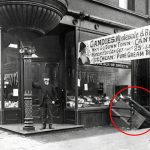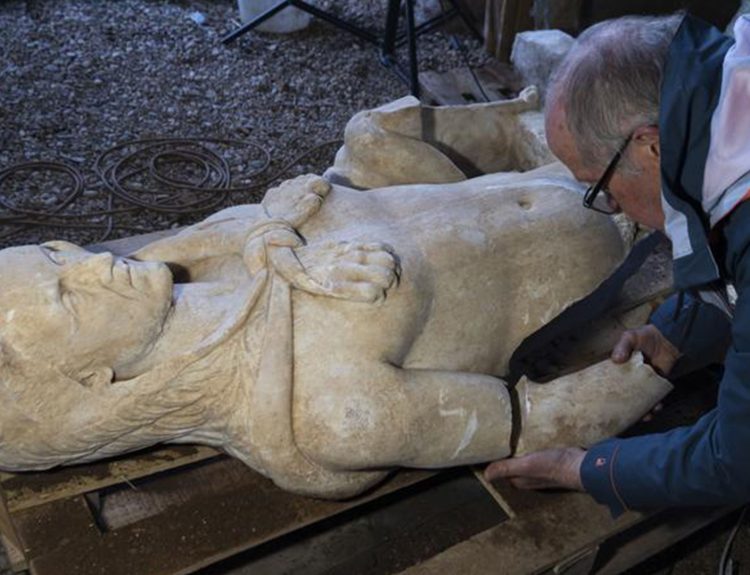Have you ever wondered how the Ancient Romans lived? What their homes looked like and how they made their living? Now, tourists to Italy’s historic city of Pompeii – the wealthy city that was buried under volcanic ash when Mount Vesuvius erupted in the year 79 – can visit a completely restored Roman townhouse, the House of the Vettii, and marvel at the grandeur of the past.
What Makes It So Remarkable?
What makes the House of the Vettii so remarkable is that, according to evidence, it was the home of two former slaves who rose well above their station to become wealthy wine merchants.
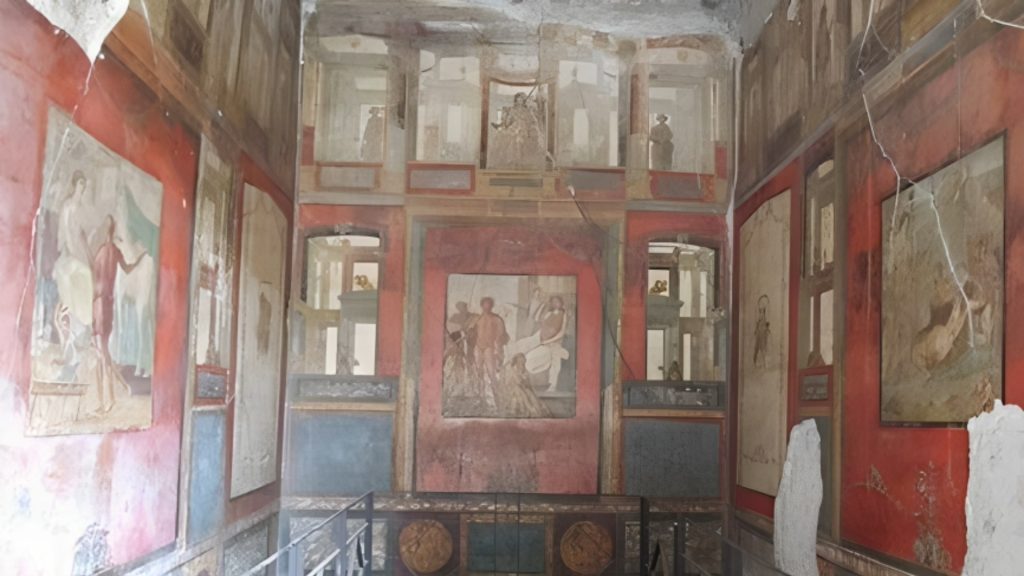
With their new-found riches, they decorated their walls with beautiful and erotic artwork and friezes, leaving us one of the greatest collections of first-century Roman art and a fantastic story.
Uncovering the House of the Vettii
When Mount Vesuvius violently erupted nearly two millennia ago, the residents of Pompeii and neighboring Herculaneum, were quickly killed by the sudden, speedy pyroclastic flow and buried under a deep layer of ash that preserved the houses and their contents. Pompeii was rediscovered in 1748 and gave archaeologists an unparalleled snapshot of daily life during the first century.

Pompeii has been the site of archaeological excavations for centuries and discoveries continue to be made. The House of the Vettii was first identified in 1894. Excavation of this location continued until the beginning of 1896 and uncovered a plethora of artifacts, art, and clues to the unbelievable identities of the home’s owners.
Buried in the Ash
The discovery and excavation of the ruins of Pompeii represent one of the most significant archaeological revelations of the 18th century. After the ancient Roman city was buried under a thick layer of volcanic ash and pumice in 79 AD, Pompeii remained largely forgotten for centuries until its accidental discovery in 1748.
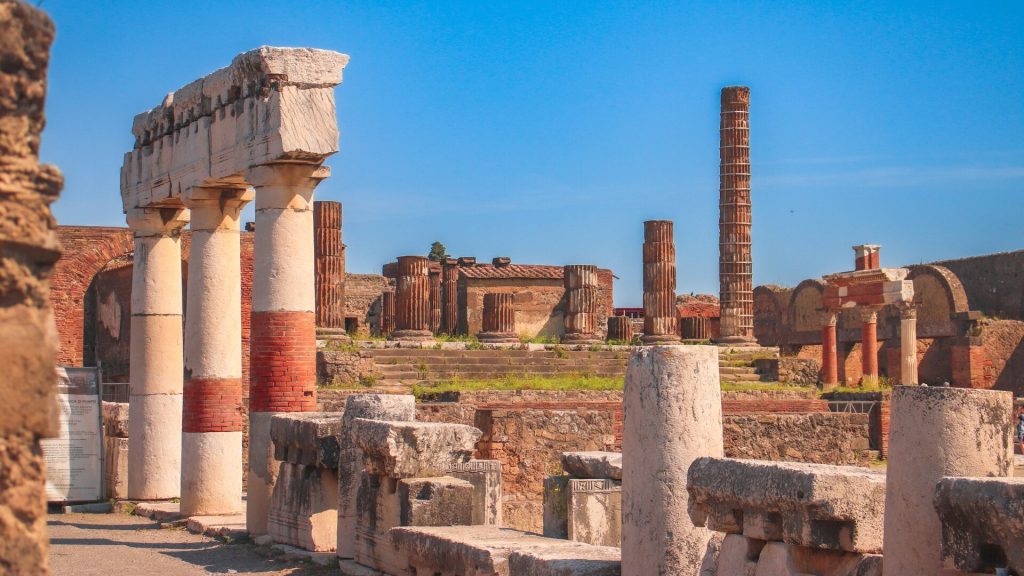
The credit for the rediscovery goes to Rocque Joaquin de Alcubierre, a Spanish military engineer. While overseeing the construction of an aqueduct in the region, Alcubierre dug a trench and encountered ancient walls bearing intriguing inscriptions.
A King with a Love of Archaeology
The real impetus for the excavation of Pompeii came in the mid 1800s when the Bourbon monarchs of Naples took a keen interest in archaeology. King Charles III initiated the first systematic excavations of Pompeii in 1748 with the goal of uncovering the ancient structures Alcubierre had found.

Under the direction of Karl Weber, who was a military officer at the time and later became an archaeologist, the first significant finds at Pompeii were found. Weber’s efforts, along with subsequent excavations by Giuseppe Fiorelli in the mid-19th century, played a crucial role in the rediscovery of the well-preserved ruins of Pompeii.
A Tragic Discovery in Plaster
It was Fiorelli who grew curious about the lumps of solidified ash with hollow voids inside. Fiorelli filled one of the voids with plaster and, after it hardened, chipped away the outer ash. To his surprise and horror, the plaster cast revealed the form of a human body, one of the victims of the volcanic eruption.
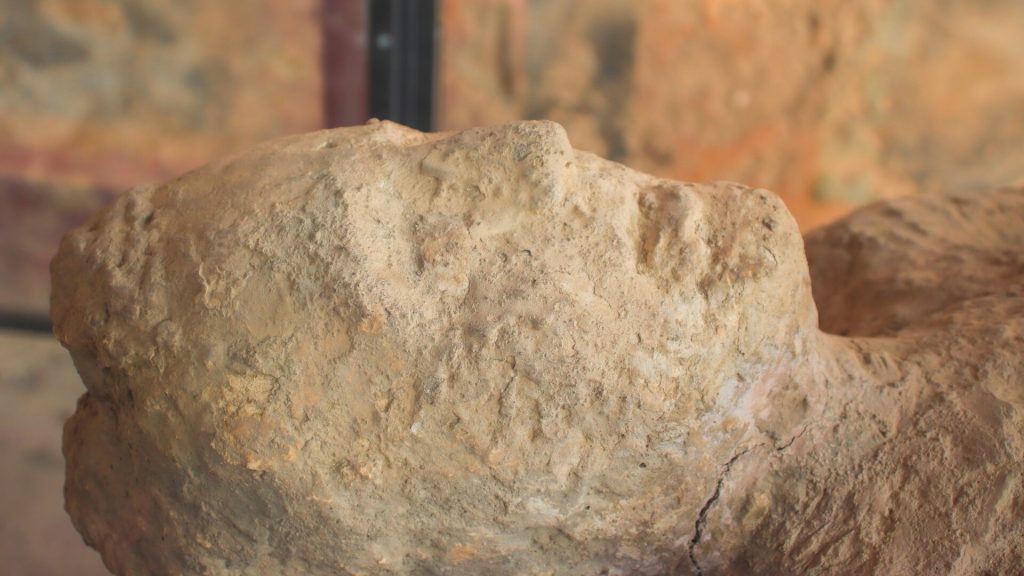
Using plaster, Fiorelli and other researchers could see the poignant moments of life and death captured in amazing detail during the eruption. Even the facial expressions of the victims could be seen. This unusual phenomenon has given archaeologists an unparalleled look at the daily life of the ancient city moments before disaster struck, including its complex social structure.
Ancient Roman Slavery Practices
From items found in the townhouse, historians have been able to identify the residents as Aulus Vettius Conviva and his brother, Aulus Vettius Restitutus. The two men were once slaves in Pompeii and their story is a prime example of the fluidity of social standing in Ancient Roman times. The extraordinary social mobility they enjoyed was not unusual in that time and place.

Ancient Rome had a complex system of ‘manumission’ – the act of freeing a slave. The “Vindicta” was the most common type of manumission and may have been how the Vettii Brothers gained their freedom. It requires the master and the slave to appear before a magistrate who would tap the slave with a special rod, called a ‘vindicta’, to symbolize their release from bondage. Our verb ‘to vindicate’ stems from this practice.
The Vettii Brothers, A Rags to Riches Story
As freemen, the Vettii brothers had more opportunities available to them. They chose to enter the wine trade business. In ancient Pompeii, as well as other parts of the Roman Empire, winemaking was an important industry. Archaeologists have unearthed an abundance of evidence that gives us insight into the wine industry in the first century in Pompeii.
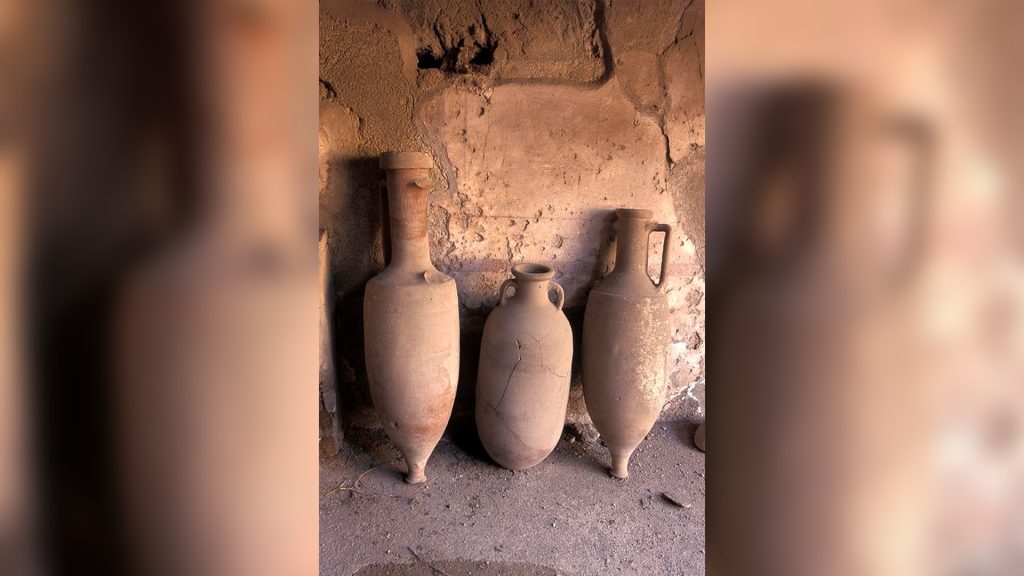
Ironically, it is Mount Vesuvius, the very volcano that destroyed Pompeii, that made the area ideal for grape growing and winemaking. The fertile volcanic soil was well suited to grape cultivation. Pompeii was a major trading hub, therefore the wine made there could be exported around the Mediterranean. It was a lucrative enterprise …. one that made the Vettii brothers quite wealthy. But it may not have been their only income stream.
There Was More Than Food Cooking Near the Vettii Brothers’ Kitchen
One room of the House of the Vettii, located just off the kitchen, was adorned with erotic and graphic art. Researchers believe that the brothers ran a brothel out of this room. Although we may find this shocking, it was not unusual for Pompeii’s elite to have an in-home brothel. Prostitution was both legal and socially acceptable.
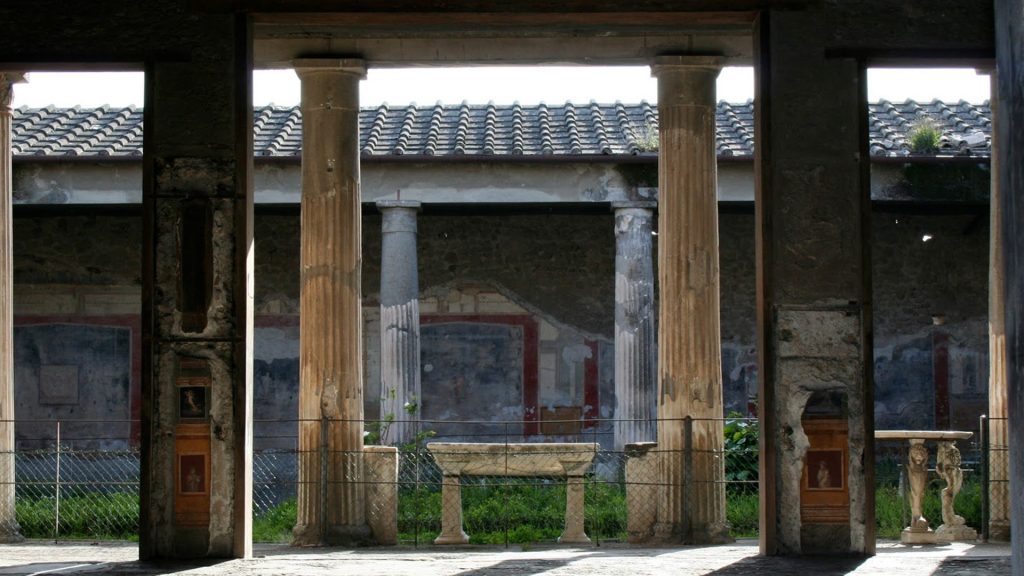
Brothel workers, however, were slaves. On the wall of this room in the House of Vettii, there is a sign identifying the Vettii’s sex worker as a girl named Eutychis. Below her name are the words “a Greek of beautiful manners” and a menu of services patrons could ask her to perform. Maybe the brothers also engaged in this line of work. Elsewhere in the house, there is a fresco of the Greek fertility god comparing his ginormous phallus to a sack of coins.
As New Money, the Vettii Brothers Spent Lavishly
The Vettii brothers were proud of their newly acquired wealth and wanted to flaunt their success to their neighbors. Throughout their home, there are signs that the men were pretentious and ostentatious. Two large ‘arca’ – vaults in which to lock up valuables – were located in the home’s open atrium so that they were visible to guests and passersby.
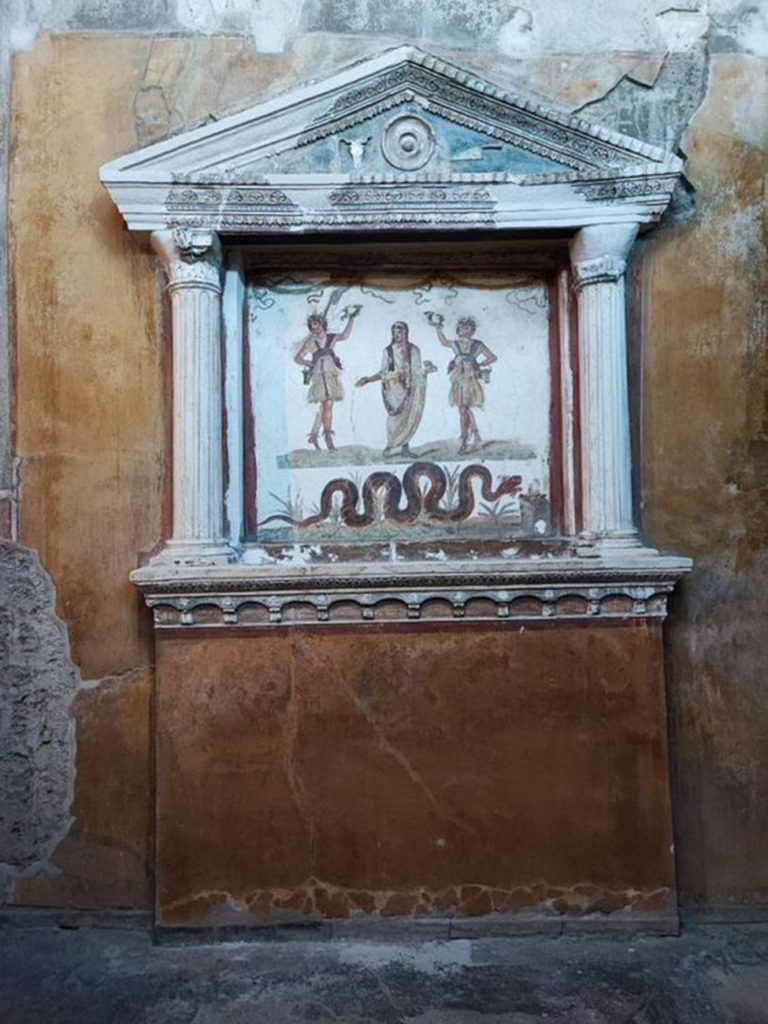
The actual location of the House of Vettii is another clue to the brothers’ attitudes about wealth and status. It is found in one of Pompeii’s most prominent neighborhoods. By all appearances, social status was important to the Vettii brothers. But what archaeologists discovered throughout their home showed just how much the men wanted to show off their wealth.
A Treasure Trove of First Century Art
The Vettii brothers invested their income into elaborate works of art which they displayed for their guests to see. Preserved beneath Mount Vesuvius’s ash are numerous frescos, statues made of bronze and marble, paintings, and ornate fountains. One room, dubbed the Cupid Room, revealed a frieze depicting a group of cupids preparing a feast.

The House of Vettii has the largest collection of what art historians refer to as ‘Fourth Style’ Pompeian art. In the one dozen fresco panels that survived intact, there are elements of the first three styles of Pompeian art, leading researchers to conclude that these are Fourth Style works. It is the subject matter of these panels that are most intriguing.
A City of Art
The art discovered in the ruins of Pompeii provides a captivating glimpse into the rich cultural and artistic life of this ancient Roman city. The walls of homes and public buildings adorned with vibrant frescoes showcase scenes of daily life, mythological tales, and intricate geometric patterns. Mosaics, skillfully crafted with tesserae, depict a wide array of subjects ranging from intricate geometric designs to intricate mythological scenes.

Additionally, the excavation unearthed numerous statues and sculptures, including busts of prominent citizens and depictions of gods and goddesses. The art of Pompeii not only reflects the aesthetics of ancient Roman culture, but it also illustrates the importance of art to the people of the city. The Vettii brothers were not alone in their love of art. In fact, for them, it seemed, having an impressive collection of art and surrounding themselves with beautiful objects were symbols of status.
The Sistine Chapel of Pompeii
The fresco paintings discovered in the House of Vettii are so significant that Gabriel Zuchtriegel, the director of Archaeological Park of Pompeii, has called it “the Sistine Chapel of Pompeii”. The remarkably preserved artwork in the home offers tremendous insight into Roman society and life in Pompeii in the days leading up to the fateful disaster.

The fresco paintings all show scenes from classic mythology, a common trope of the time. However, the scenes follow specific themes, ones that were likely very important to the Vettii brothers. The overarching themes of the paintings are sacrifice and punishment. Could these have been chosen to symbolize the Vettii brothers’ time in slavery?
A Sprawling Home
The House of Vettii is quite large, one of the biggest homes in Pompeii. Like most of the homes in the city, the House of Vettii has two courtyard areas. The main living quarters of the Vettii brothers surround the larger of the two and the servants’ quarters extend off the smaller courtyard. There is a kitchen, a spacious dining room, and four ‘cubiculum’ – bedchambers for the brothers and their guests. There was even a latrine room!
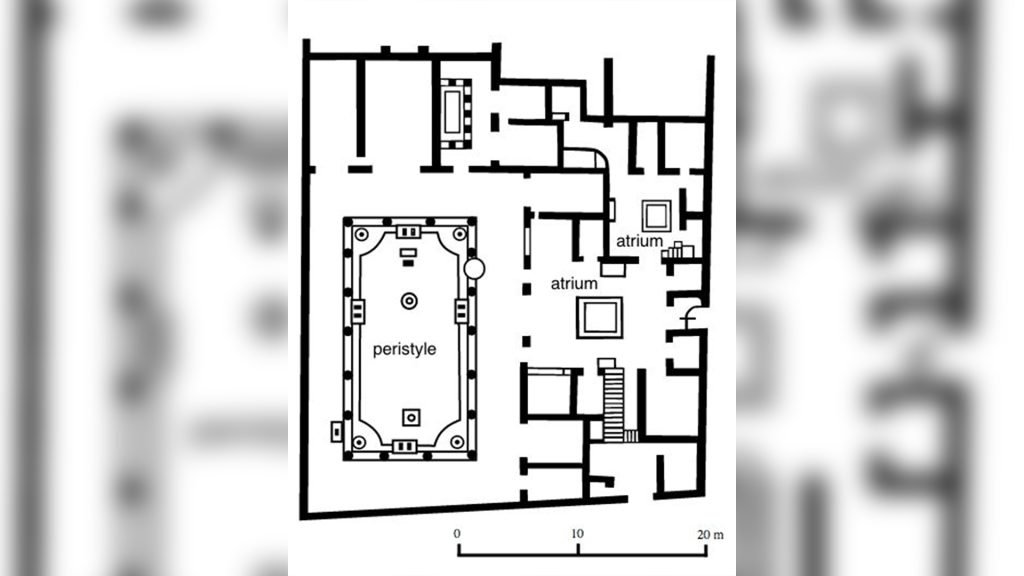
The House of Vettii has two main entrances, one from the east and one from the south, as well as a service entrance in the back. There is one noticeable omission in the home. There is no ‘tablinum’. Most homes of that day included a ‘tablinum’ which is akin to a home office. Did the brothers conduct their business from an outside office? That’s a question that has not yet been answered.
Restoring the House of Vettii to its Former Glory
For decades, archaeologists worked to excavate the House of Vettii, but the work shifted toward a new mission a few decades ago – restoration. The rich collection of frescas, it was decided, should be shared with the public. Removing the artwork and relocating it all to a museum would risk damaging the pieces. Besides, the paintings should be viewed in their original location for visitors to get the whole experience.

The restoration work took a team of dedicated workers more than twenty years to complete. In 2016, a portion of the House of Vettii was opened to the public, but only for a short time. It was closed again over concerns for public safety and the protection of the ruins. Without the public in the way, restorations could be completed safely.
The House of Vettii Is Welcoming Guests Once Again
Evidence suggests that the Vettii brothers enjoyed entertaining guests to their beautiful home before Mount Vesuvius crashed the party. The brothers may be thrilled to know that their home is once again open to the public. Guests can marvel at the intricate artwork still remaining in the men’s showpiece home.
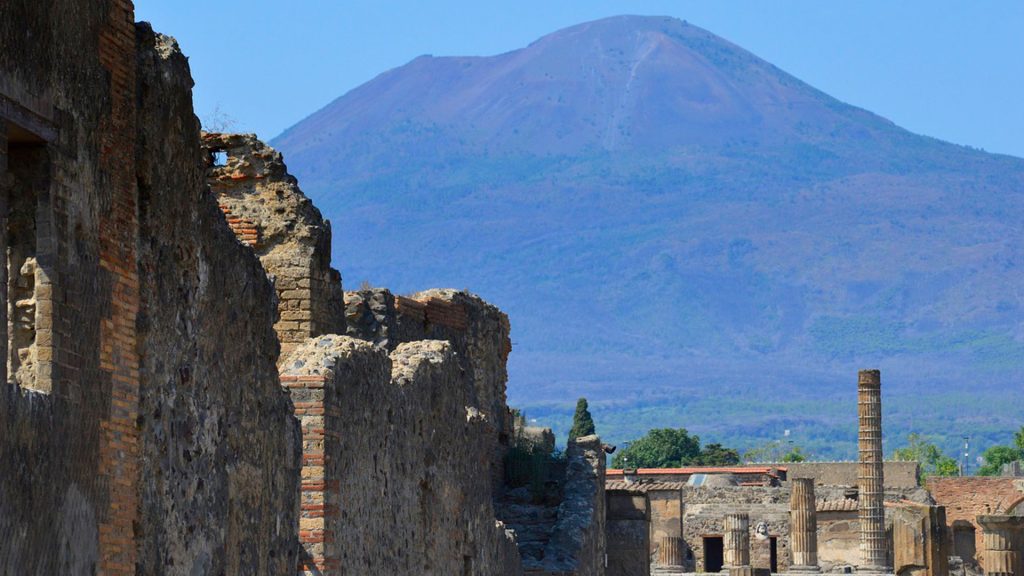
With the restoration work complete, the House of Vettii finally reopened to tourists in early January 2023. The city of Pompeii and its sudden, tragic destruction has long fascinated the public. Now they can see the former grandeur of the doomed city for themselves.
Preserving the Treasured Past
The restoration work at the House of Vettii is just one of several ongoing projects at Pompeii designed to preserve the famed archaeological site and halt further deterioration of it. The $137 million Great Pompeii Project has been funded in large part by the European Union.

In addition to the restoration of the House of Vettii, the Great Pompeii Project has also worked to restore two other notable homes unearthed in Pompeii. One is the Villa of the Mysteries, located on the edge of the city, and the other is the House of Lovers. Discovered in 1923, the House of Lovers was so named because there is an inscription in the home reading “Lovers, like bees, make a life as sweet as honey”.
Pompeii, a City Frozen in Time
Thousands of people died when Mount Vesuvius erupted in the year 79. The resulting ash surrounded their bodies, essentially freezing them in time. The swiftness of the eruption and the thick blanket of ash sealed the city for almost 2,000 years.

Once archaeologists began to peel back the layers of ash, the world was astonished to find a slice of Roman life had been preserved through time, granting us a unique opportunity to glimpse the past. Visitors to the House of Vettii can step back in time to enjoy the splendor of the home the Vettii brothers created for themselves thousands of years ago.



